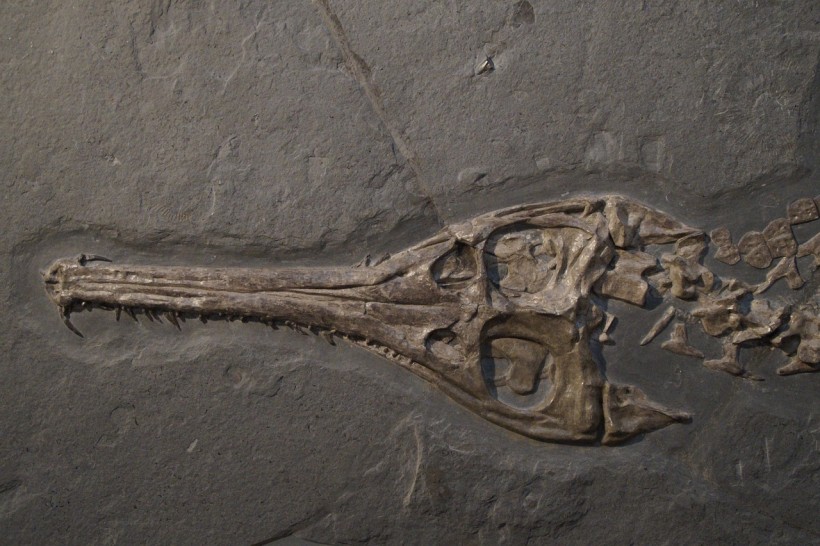In Brazil, scientists uncovered an "enormous" crocodile progenitor species that lived alongside massive titanosaur dinosaurs between 72 and 66 million years ago.
They named the species Titanochampsa iorii, which was between 10 to 20 feet (3 and 6 meters) long and had a "quite strong bite," according to the study titled "A Large-sized Mesoeucrocodylian From the Late Cretaceous of Brazil With Possible Neosuchian Affinities" published recently in the journal Historical Biology.

72-Million-Year-Old Fossil of New Crocodile Species Initially Mistaken as a Dinosaur Discovered in Brazil
Crocodile Skull Mistaken as Dinosaur
In 1987, researchers from the University of São Paulo discovered the fossil, mostly made up of a partially intact skull top and most of the reptile's right side, in the Monte Alto district of the Brazilian state of So Paulo.
As The Independent reported, the specimen was first described as a "half titanosaur skull" in the museum exhibition due to its massive size and fragmented nature, according to paleontologists. However, it was eventually identified as a "fragmentary crocodyliform skull."
The massive crocodile was most likely a member of Neosuchia, a group that comprises all living crocodilians and their closest fossil ancestors. Scientists believe it exhibited semiaquatic behavior while living in an arid or semiarid environment.
Researchers wrote in their paper that both T. iorii's a big size and predicted powerful bite are compatible with an amphibian lifestyle. They added that even the crocodile's ambushing behavior is found in most crocodiles today and matches its putative connection to Eusuchia.
Despite its fragmented nature and perplexing set of features, the new crocodile species has enough traits to reject its placement inside Notosuchia, the Bauru Group's only crocodyliform clade discovered so far.
Most Bauru Group crocodyliforms were discovered in the Adamantina Formation, whereas the younger Marlia Formation almost lacks such fossils. They presented in their paper a thorough comparative description of a massive skull roof discovered in the Monte Alto area's Marlia Formation deposits and assigned it to a new crocodyliform.
Unique Features of the New Crocodile Species
The remains of T. iorii may be incomplete, but researchers pointed out that the specimen bears many unique characteristics, Interesting Engineering reported. They said that there are obvious signals of abrasion on the roof surface and ornamentation on the squamosal at the lateral corner of the skull.
Additionally, the researchers wrote in their research paper that the new crocodile species possess pits and faint grooves in its skull. They wrote that the large size estimated for the specimen, ranging from 2.98 to 5.88 meters, coupled with its possible connection to Neosuchia, suggests they were semiaquatic.
Thiago Fachini, a paleontologist and study co-author, said that the new crocodile species contributes to a better understanding of the evolutionary aspects of crocodiles and why all modern extant crocodilians and their closest fossil ancestors were successful but most crocodyliforms became extinct at the end of the Cretaceous period.
RELATED ARTICLE: 7-Million-Year-Old Fossil Found in Peru Shed Light on the Marine Origins of Modern Crocodiles
Check out more news and information on Crocodiles in Science Times.














